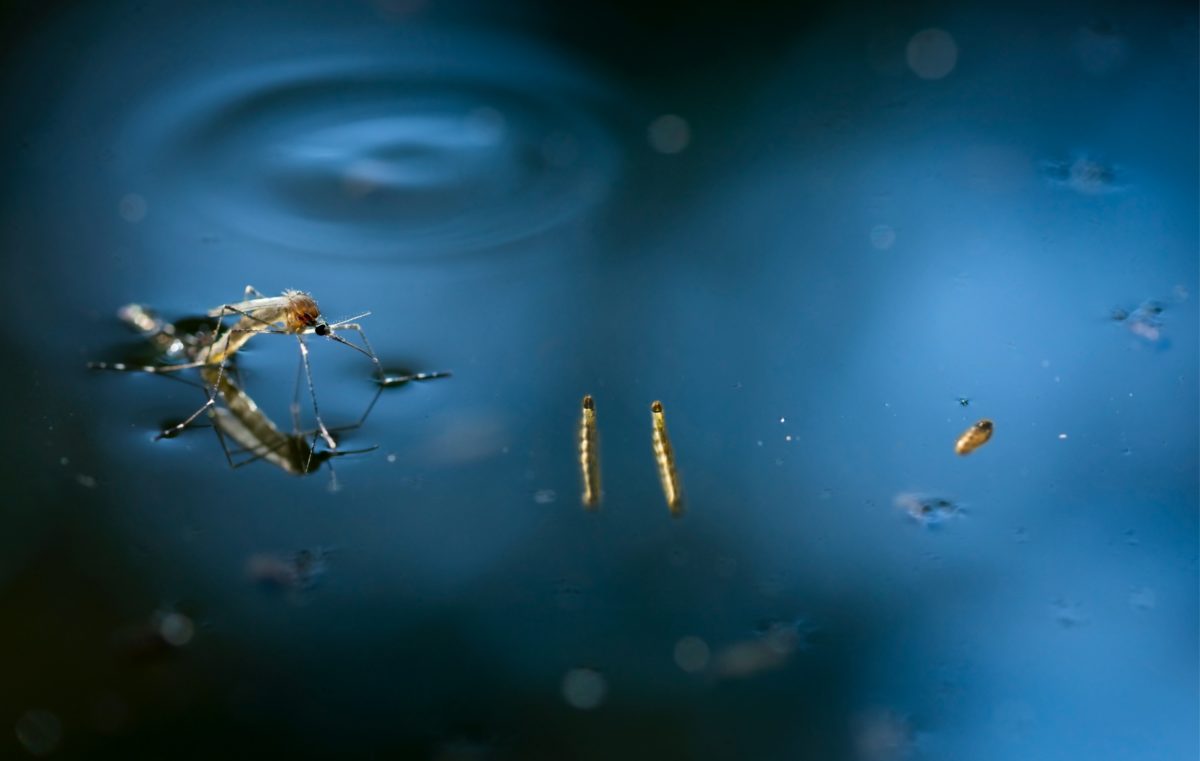We all know that living with bugs is a way of life. But when it comes to some particularly pesky bugs, mosquitos win first prize!
They buzz around your head with an exceptionally bothersome and chaotic flap of their wings. If that were not enough, entire broods emerge all at once, like a swarm of bees.
Just one pesky mosquito delivers an exacting bite that irritates and inflames the skin. That leaves the victims obsessed with a relentless itch that never gets satisfied. Worst of all, they’re notorious disease-spreading vehicles.
The biggest disease threats to you and your family in the four-state region are likely heartworm–a deadly parasite that threatens family pets, there’s also encephalitis (inflammation of the brain), and West Nile virus. There are many others, but most were eradicated from the U. S. However, a few other diseases have made U.S. news headlines in the last few years, like Zika and Dengue in parts of Florida and Texas.
All that probably has you wondering how to control a mosquito life cycle. In truth, your best line of defense is the identifying stages of a mosquito life cycle.
Types of Mosquitoes
There are more than 3,000 species of mosquitoes worldwide; the U.S. accounts for roughly 175 of those species. The thing is, mosquitoes rarely stay still long enough for anyone to identify the species.
Essentially there are 50 known species of mosquitoes to exist in Missouri alone. If you live in the four-state region, you will likely encounter at least 42 of those different species. However, the extensive research on mosquitoes helps health departments better understand species behavior.
For instance, one mosquito species tends to feed on amphibians while another prefers human blood. There are even species that are more aggressive biters than others. Some are genetically incapable of flying no more than a few yards from where they hatched.
Four Distinct Mosquito Life Cycle Stages
Like every living thing on Earth, a mosquito life cycle has stages: egg, larva, pupa, and adult. Each stage of a mosquito’s life cycle depends on species and temperature.
A single adult female can lay hundreds of eggs. With a high volume of eggs it makes it difficult to track how long one brood might live. But science believes the average life cycle for a mosquito runs 10 to 14 days when temperatures hover between 70 to 80 degrees Fahrenheit.
Because of their relatively short life cycle, it is possible to identify a brood of mosquitoes with only the naked eye. However, the egg is the mosquito life cycle stage that is hardest for humans to identify.
Mosquito Egg
To see a tiny mosquito egg requires a microscope. An adult female will either lay eggs on the surface of a hospitable habitat. In places such as the surface of water, or an area of damp ground prone to flooding.
Not all mosquito species are the same. Therefore each evolved differently. For example, some female mosquito species may lay eggs individually, while other female species lay eggs that stick together, known as rafts.
So it’s best to treat any stagnant water or damp soil around your home with a larvicide. When the larva hatch, typically in 2 to 3 days, they’ll consume the larvicide and die off before emerging from the water, which should reduce the sheer number of mosquitoes around your home.
A Mosquito Larva
When referred to as wrigglers, mosquito larvae are in phase two of the metamorphosis into adult mosquitos. Larvae (plural form of larva) transition through four molts getting bigger after each molting cycle.
As part of a larva’s transformation, they begin to breathe air through any number of evolutionary processes. For example, some mosquito species, the larva, live floating on one side to obtain air, while others use a breathing hole, and some attach to plants to access an air supply.
During each molt, the mosquito larva will ingest microorganisms and other organic material in the water. A phase in which mosquito larvae are killed effectively with larvicides before or near their final molting stage, which can differ from species to species of mosquito, lasting four to 10 days.
Once those key temperature points are reached, the final molting is complete and the pupa stage begins.
The Mosquito Pupa
A pupa is the next step in a mosquito’s quest to adulthood. It is an incubation period of the mosquito life cycle. A stage of life when all feeding halts, much like a caterpillar cocoon. Their only defense is their tail, which they use to propel themselves to deeper water or toward protective cover.
For some species of mosquitoes, the pupa stage can take approximately two days during the summer. Once this developmental stage is complete, the pupa shell cracks and emerges from its watery nursery as an adult mosquito.
An Adult Mosquito
Just before an adult mosquito takes flight, the final metamorphic phase is known as the imago. As they float atop the water’s surface, an adult mosquito exoskeleton begins to harden, their wings unfold, and they must dry completely to take flight.
Their first maiden flight will include feeding on blood and mating, which can take a couple of days before liftoff. From the moment the female lays her eggs through the entire metamorphosis to death, is what scientists base the entire life cycle of 10 to 14 days for a mosquito.
Knowledge is Powerful
That kind of knowledge should ease your mind. In addition, understanding how to manage mosquitoes closer to your home and your family, you can better prepare your outdoor home defense.
With a team of experts, Bug-A-Way is ready to help you build an outdoor mosquito defense to better protect you and your family. The month of April is excellent to begin a plan with Bug-A-Way. They can assist you in developing a routine schedule to service your home inside and out that will end those pesky mosquitoes before they hatch this season.
